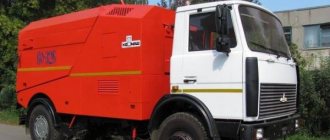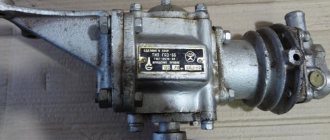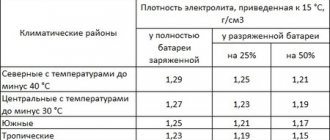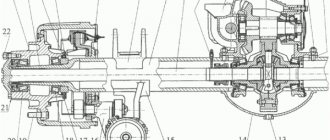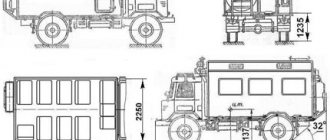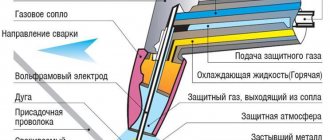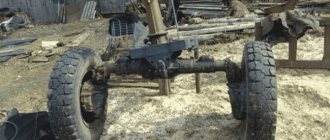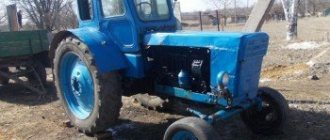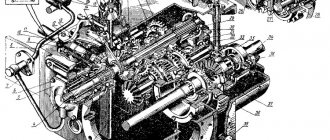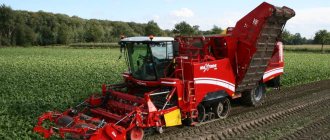- home
- Media center
- Articles
- Front axle ZIL 131 device
Menu
- News
- Articles
- Video materials
- Photo materials
- Publication in the media
- 3D tour
15.12.2020
The ZIL-131 truck is all-wheel drive, so it uses a complex front axle. The mechanism is designed in such a way that torque is transmitted continuously to the wheels from the drive in any position of the steering wheel. The front axle ZIL 131 is a very reliable device, therefore it is able to withstand high loads when transporting various loads. All-wheel drive may require engineers to develop complex mechanics, but it also offers a lot of advantages in motion.
Front axle device
The front axle on the ZIL 131 is made by welding parts. This ensures the necessary reliability and endurance of the car under load.
The front axle on the ZIL 131 has the following design:
- There is a double transmission. Implemented using bevel and cylindrical gears with oblique teeth. Between them there is a gear ratio of 7.33. Unlike the middle and rear axles, the front axle is also a drive axle, so its mechanics have a CV joint that allows the wheels to turn at an angle of 30 degrees. Thanks to it, torque transmission is ensured at any angle of rotation of the wheels.
- The front axle, having a main gear in its design, also contains a vertical bajo. The mechanism is located on the crankcase and is bolted, unlike the middle and rear beams, the designs of which are completely identical. Otherwise, they agree: there is a two-stage gearbox. The same unit is used on the earlier model of the ZIL-130 civilian truck. It uses a driveshaft that is bolted to the drive flange.
- The bearing unit is equipped with covers, one of which has a hole. It is closed with a plug, which blocks the access of moisture to the gearbox when overcoming lowlands.
- Also in the design of the front and middle axles of the ZIL 131 there is a differential device that uses 4 satellites.
- The axle shafts use steering knuckles. Accordingly, the rotation angle is limited by thrust bolts welded to the body.
- Since the car is equipped with an automatic inflation system, there is a nipple in the hinge through which air is supplied to the inflator. There is a tap installed on the outside through which you can connect to the general pneumatic system of the car.
Modifications
- ZIL-131 – basic modification;
- ZIL-131A is a version with unshielded electrical equipment, which it received from the ZIL-130. Its differences from the basic version were the absence of special military equipment, a middle bench in the body and a searchlight. Production of the car ended in 1971;
- ZIL-131V is a truck tractor built on the basis of the ZIL-131. The car had 2 spare wheels, a shortened frame and a fifth wheel coupling. The car was used to transport goods together with a semi-trailer weighing 12,000 kg (on dirt roads - 10,000 kg). Produced from 1968-1986;
- ZIL-131D – experimental chassis for dump trucks; did not go into mass production due to many shortcomings;
- ZIL-131D is a model with the same name and a Caterpillar engine, created in 1992. Its production lasted 2 years;
- ZIL-131N is a modernized version of the basic model. The main differences: a new ZIL-5081 engine, an increased service life (250 thousand km), an awning made of synthetic material and improved optics. Production of the ZIL-131N ended in 1987;
- ZIL-131NA – analogue of ZIL-131N with unshielded electrical equipment;
- ZIL-131NV - truck tractor with an improved platform;
- ZIL-131N1 – modification with a 105-horsepower diesel unit “D-245.20”;
- ZIL-131N2 – version with a 132-horsepower diesel unit “ZIL-0550”;
- ZIL-131S and ZIL-131AS are northern versions. These models were equipped with a cabin with an autonomous heater, frost-resistant rubber products, additional thermal insulation, fog lights, battery insulation and double glass. Cars were used in temperatures down to -60 degrees;
- ZIL-131NS, ZIL-131NAS and ZIL-131NVS - improved versions in the northern version;
- ZIL-131X - model for desert and hot areas;
- ZIL-131-137B – road train;
- ZIL-131 KUNG (unified body of zero dimensions) - an insulated building with a stove and an air purification station (FVUA-100N-12) can serve a wide range of military needs.
- ZIL-131-ATZ-3 – fuel tanker;
- ZIL-131-MZ-131 – oil dispenser;
- ZIL-131-ATs-40 – fire engine.
Important Features of operation and maintenance of Oregon chainsaws (Oregon)
Difference from the middle and rear axles
The front beam, due to the presence of a rotating mechanism, turned out to be 50 kg heavier than the ZIL rear axle, the structure of which is largely the same. Except that in the latter the crankcase is bolted to the top of the beam and equipped with seals.
In order for the mechanics in the mechanisms to work properly, a mandatory filling of liquid lubricant is required. It should be all-season oil, for example, TSp 10 or similar. The minimum temperature threshold should not be higher than -30 degrees, since in a frozen state a high load is placed on the parts of the transmission mechanisms.
Description
The weight of the ZIL 131 allows the vehicle to be classified as a truck with all-wheel drive and a front-mounted engine with a 6x6 wheel formula. The truck was originally designed as an off-road vehicle. Its task is to transport goods and people, tow trailers on any kind of soil. In the model line, this car replaced the obsolete predecessor ZIL 157.
In terms of cross-country ability, the vehicle is not inferior to many tracked competitors. The updated truck has been significantly modernized compared to its predecessor. It received an improved axle, tires with 8 layers and a special tread pattern, front-wheel drive became switchable, and a single driveshaft was installed on the transfer mechanism. The car performed excellently in difficult road and climatic conditions, operating stably and reliably in temperatures ranging from – 45 to + 55 °C.
Front axle control
The activation process of the front axle occurs using a powerful electro-pneumatic device. This can be done forcefully or automatically. The transmission is switched to the second mode when the gearbox on the ZIL 131 switches to a row reduction scheme. All movements in the unit are controlled by limit switches, which, in turn, are transmitted to the dashboard in the form of an indication using light bulbs or other lighting devices.
The electromagnet is controlled by a limit switch, which with its contacts closes or opens the power supply circuit of the coil. The bridge is connected by a power rod, which opens the main air valve. Air is supplied through it under pressure with a value of at least 5 kgf/cm2. After this manipulation, the unit is connected to the pneumatic brake drive system. The drive to the front axle is activated by a movable carriage, which moves under the influence of the rod and the diaphragm pressing on it.
The reverse process occurs automatically, since the mechanism is acted upon by a spring. If necessary, you can manually engage the transmission to the axle, for which there is a two-position toggle switch on the dashboard. It turns on the power to a powerful electromagnet and signals this action.
Information for individuals
In what ways can I pay for the ordered goods?
- Cashless payments.
- If it is not possible to transfer funds from the current account, our organization issues an invoice to the individual, which he can pay at any bank.
When can I make payment?
Full payment upon purchase
NOTE! In this case, the order is sent by any transport company. Partial prepayment. Part of the cost of the goods is paid, the rest of the amount is paid after the unit arrives at the terminal of the transport company in your city
NOTE! In this case, the order is sent exclusively by Business Lines.
IMPORTANT! In case of full or partial payment, we will send you by mail a copy of the issued delivery note, certified by a seal, indicating the name of the product and its cost. The original invoice will come with the goods
How bridges are regulated
Despite the fundamental differences between the front and other axles, the gearboxes still have a single design (the same gear ratio), and therefore the regulation process is completely identical. This process should be understood as adjusting the bearings and the normal connection of the transmission gears. It is important to remember that the spur wheel is not adjustable. It is factory installed and its position cannot be changed. If repair of the support unit is required, this can only be done by replacement without disassembly.
The adjustment consists of removing play by placing special liners under the bearings. They are supplied from the unit manufacturer's factory in a set of 2 pieces. Accordingly, to carry out the adjustment it is necessary to remove the cardan, disassemble the assembly and remove the glass assembly from it. This can only be done with additional screws. Gaskets are mounted between the end surfaces of the bearings, which will eliminate transverse play as a result of wear.
It is also necessary to make adjustments in the transmission. This can only be done in a factory setting by selecting gears with the largest contact patch, eliminating play in the gear train. Naturally, new gears may be tight, so they must go through a grinding-in stage. Accordingly, they are all unique and cannot be replaced individually. This can only be done in assembly.
Car engine
Despite the fact that the first production model of the car in question was released back in 1966, the technical characteristics of the engine in many areas satisfy the needs of the Russian army even today:
Thanks to its great power and high torque, the ZIL-131 could reach speeds of up to 85 km/h on the highway. Considering the year of manufacture, this parameter can be called quite impressive.
Not every passenger car of those years could move so fast, not to mention trucks of such a large mass.
The fuel consumption of the ZIL-131, shown in the photo on the right, with a mixed driving cycle is 49.5 liters per 100 km at an average speed of 60 km/h.
According to the technical specifications, the engine is designed to work with AI-76 gasoline or a similar one, but with a higher octane number.
Gearbox for ZIL 130
The ZIL gearbox weighs 98 kg and has a unique design. On the ZIL 130 it is three-way and equipped with 5 stages, between which smooth switching is carried out. The design provides two inertial-type synchronizers, which are used to activate all other gears except the first. Modified rings and synchronizer clamps are used. This unit can be disassembled for repair; parts can be replaced individually. Their grinding will be carried out already during work. It is important to fill with the correct transmission oil to ensure the required reliability in all conditions.
Weight, dimensions, load capacity
The weight and overall characteristics of the vehicle of this type are relatively small, despite its main purpose. The parameters are as follows:
- curb weight of the model without winch – 6,135 kg;
- curb weight of the model with winch is 6,375 kg.
Although, according to the technical specifications, the weight of the winch mechanism of the ZIL-131 vehicle is quite significant, its presence is always justified, since it allows you to cope with movement in extremely difficult and extreme terrain conditions.
Gross vehicle weight:
- with a winch - 10,425 kg;
- without winch - 10,185 kg.
The maximum load capacity is only 3,500 kg. Also, if necessary, the equipment in question can be used in conjunction with a trailer.
Its permissible weight depends on the road conditions in which the ZIL-131 travels:
- weight when driving on a paved road – 6,500 kg;
- when driving on a dirt road – 4,000 kg.
The basic version of the car has the following overall dimensions:
- length from the front bumper to the rear of the body, mm – 7,040;
- height without awning, mm – 2,480;
- height with awning, mm – 2,975;
- width from left wheel to right, mm – 2,500.
The distance between the wheels is 3.35 m +1.25 m. The width of the front and rear tracks is the same and is 1.82 m. The turning radius is as much as 10.8 m. Considering the length of the body, this parameter is not that great.
The braking distance is 29 m at 50 km/h. The reason for this is the large inertia arising from the mass of the entire car and van with people, as well as all the equipment available.
Car engine
Despite the fact that the first production model of the car in question was released back in 1966, the technical characteristics of the engine in many areas satisfy the needs of the Russian army even today:
Thanks to its great power and high torque, the ZIL-131 could reach speeds of up to 85 km/h on the highway. Considering the year of manufacture, this parameter can be called quite impressive.
Not every passenger car of those years could move so fast, not to mention trucks of such a large mass.
The fuel consumption of the ZIL-131, shown in the photo on the right, with a mixed driving cycle is 49.5 liters per 100 km at an average speed of 60 km/h.
According to the technical specifications, the engine is designed to work with AI-76 gasoline or a similar one, but with a higher octane number.
